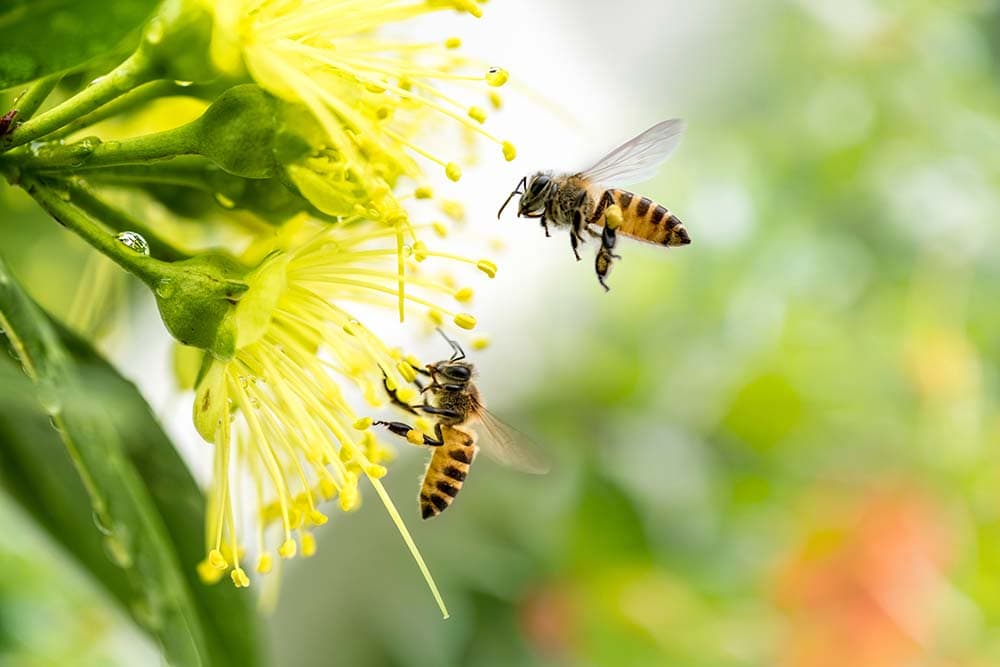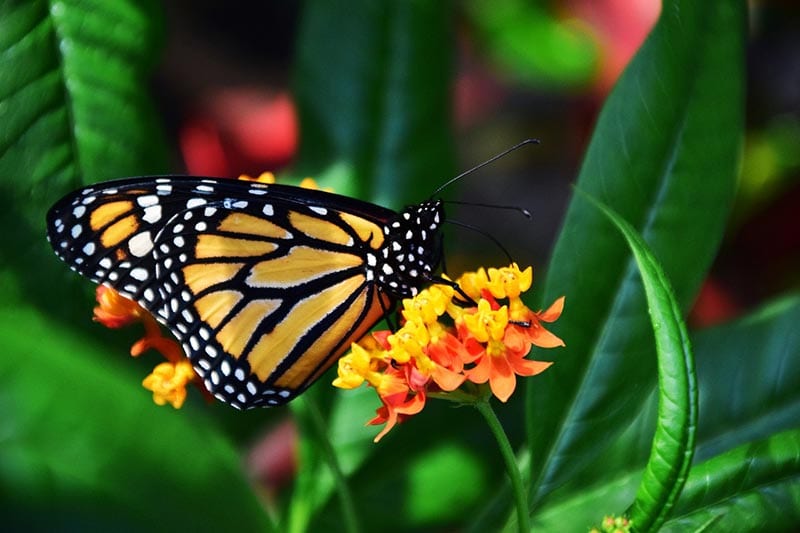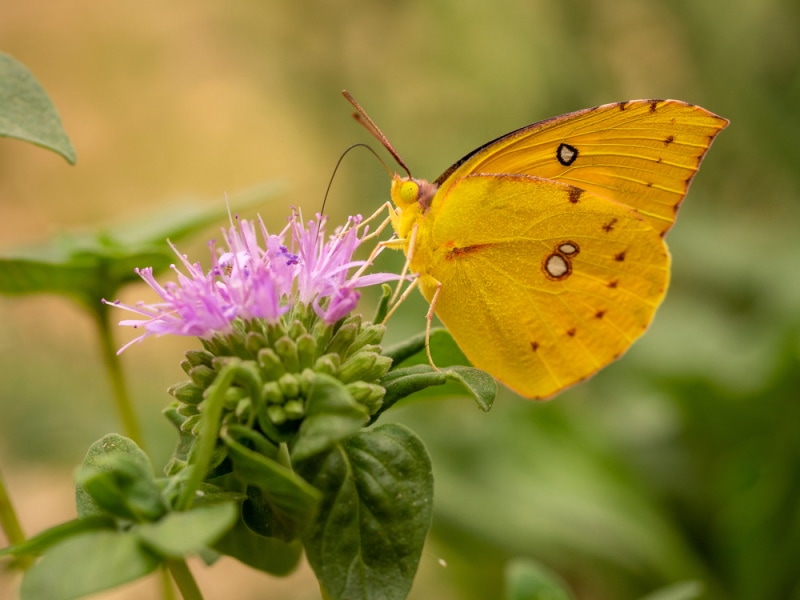Does Michigan Have a State Insect? The Surprising Answer!
-
Pete Ortiz
- Last updated:

Michigan is among the top locations that helped put the world on wheels, having been the home to Ford’s first automobile factory in 1907. The state is also known for bustling cities shaped by college life, beautiful shorelines courtesy of the Great Lakes, and one of the two states that do not have state insects.
Read on below to find out more.
The Most Prominent State Insects in the US
Most states adopt official state insects as part of their identities. Just like how states name official birds and trees, they also assume a special connection with a single species (or multiple in some instances) of insects.
In 1929, California officially chose the Dogface Butterfly as its “state insect.” It was the first state to do so, and little did Clement Calhoun Young (the 26th governor of California) and his team of legislators know, they were setting a trend that 47 other states would adopt.
The honey bee appears to be the most popular choice owing to its hard-working nature, followed by the monarch butterfly. However, other states have broken new grounds by choosing entries such as the inquisitive Carolina mantid (S. Carolina) or the fierce tarantula hawk wasp (New Mexico).
Read on to learn more about the most prominent insects in the states:
1. Honey Bee

In 1973, the North Carolina General Assembly adopted Honey Bee as the state’s official insect.
The honeybee is most likely a tropical African species that migrated to Northern Europe from South Africa, then west into China and India. They were carried to America by the first settlers and are now found throughout the world.
About 20,000 bees make up a standard hive, and they are divided into three types: worker, drone, and queen. The bee has antennae that detect scents, eyes that observe flowers, wings that help it move around, and legs for walking and collecting pollen. It also has a stinger to defend the hive and crop for carrying nectar.
2. Monarch Butterfly

The monarch butterfly was adopted as Minnesota’s official state butterfly in 2000. The monarch is among a handful of species of butterfly that migrate north. Its wide range, large size, black wings, and bright orange color make it one of Minnesota’s most prominent insects.
Monarch butterflies lay eggs on milkweed and live for about 4 weeks every summer in Minnesota, except for the last generation, which lingers around for approximately 6 months. Members of the current generation move to Mexico each fall, where they spend the winter in a torpor or semi-hibernated state.
The monarch also stays in Michigan for about 4 summer weeks before moving on. A few years ago, this magnificent monarch captured the angelic hearts of West Bloomfield School District elementary students who proposed naming it as Michigan’s state insect. Four senators took the idea seriously and are working on the bill.
3. Dogface Butterfly

The dogface butterfly was adopted as a California state insect in 1972, but entomologists had chosen it in early 1929.
The butterfly, sometimes known as the doghead, now graces the US stamp and California state driver’s license. Only in California can you find this striking butterfly with black, orange, and bright yellow colors. However, it’s challenging to see—they live only for one season, eat a small variety of plants, and lay approximately 100 eggs during that season.
Extreme sexual dimorphism is present in this species, with each sex exhibiting distinctive markings and colorations. You can easily see an outline of a dog’s head on the male’s multicolored wings when they are open. Females are larger than males, have a wing span of around one and a quarter inches, and are all yellow with a black patch on the underside of their front wings. They are green as caterpillars, with white stripes running along their sides.
4. Ladybug

The ladybug is the official State Insect of Ohio, New York, Tennessee, Delaware, New Hampshire, and Massachusetts. It is believed that these states adopted the ladybug as the official state symbol because it delights children everywhere and benefits agriculture.
Ladybugs benefit farmers and gardeners because they eat tiny insect pests that damage plants. One ladybug can devour harmful larvae and insects such as mites, leafhoppers, mealy bugs, and scales.
Should Michigan Adopt a State Insect?
Among the 50 states, Michigan and Iowa are the sole remaining states that don’t have a state insect. As a result, there has been some attention in the capitol as to whether or not Michigan should adopt a state insect.
Michigan lawmakers proposed adding a state insect multiple times, with others recommending beetles besides the monarch butterfly. Here is a complete list of proposed state insects.
Mayfly
Few summers wind up without swarms of mayflies on Michigan streets. They rocket out of the water after living in shallow streams and still pool as nymphs for up to 2 years. Unfortunately, females have a lifespan of less than an hour, while males live for up to 2 days.
Lake Huron Locust
Named after one of the Great Lakes, this endangered critter lives around Michigan and some parts of Ontario. Currently, Canadian environmentalists are actively restoring their population, and naming them as Michigan’s state insects will shed light on the need to protect the species by regulating shoreline development projects.
Mitchell’s Satyr Butterfly
Though the Satyr butterfly may not be as striking as the monarch, it needs attention. Previously prevalent in over four states, their numbers have been reduced to a few scattered habitats in Michigan and Indiana. Having it as a state insect will considerably push conservation efforts forward.
Hungerford’s Crawling Water Beetle
Hungerford’s crawling water beetle is thought to be one of Michigan’s oldest insects. The quarter-inch beetle lives only in Michigan and Ontario.
Conclusion
We may not be sure of how long it will take, but Michigan’s state insect is around the corner. Over 10 insects, including the monarch butterfly, mayfly, Lake Huron locust, and water beetle have been proposed by either conservationists or elementary schools. Hopefully, their efforts will pay off, and Michigan will soon have a state insect.
See also:
- 16 Most Common Types of Butterflies in Michigan (With Pictures)
- 21 Most Common Types of Butterflies in Georgia (With Pictures)
Featured Image Credit: jasongillman, Pixabay
Contents



